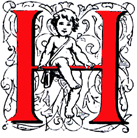From Sir Lesley Stephen & Sir Sidney Lee (eds.), Dictionary of National Biography: from the earliest times to 1900. London, Oxford University Press, 1949. — Marjie Bloy, Senior Research Fellow, National University of Singapore [2000].
In August 2013 Merle Harding e-mailed from the UK to correct the artist's place of death, which the OED erroneously stated as his home in Barnes. “He in fact only lived in Barnes from 1854-1857 and died at his London home, 3 Blandford Square, on 21st April 1875. This can be verified in the online national Probate Calendar. He was, however, buried in the Old Barnes Cemetery on Barnes Common.” — George P. Landow.

enry William Pickersgill, a painter, was born in London on 3 December 1782. He was adopted early in life by Mr. Hall, a silk manufacturer in Spitalfields, who sent him to a school at Poplar, and at the age of sixteen placed him in his own business. The war with France, however, caused a decline in the silk trade and in Mr. Hall's business, so that Pickersgill, who had already imbibed a love of painting and displayed some skill in draughtsmanship, determined to adopt painting as a profession. He was a pupil of George Arnald, A.R.A., from 1802 to 1805, when he was admitted as a student in the Royal Academy, having obtained an introduction to Fuseli, then keeper, through a surgeon who attended on him during a severe illness.
Pickersgill at first painted, besides portraits, historical subjects or those from poetry and mythology. He exhibited for the first time at the Royal Academy in 1806, sending a portrait of Mr. Hall, in 1808 one of himself, and in 1809 one of Mrs. W. Hall. Subsequently he devoted his time almost entirely to portrait painting. He was for over sixty years a constant and prolific exhibitor at the Royal Academy, where nearly four hundred paintings of his were shown at one time or another. He was elected an associate in 1822 and a royal academician in 1826. After the death of Thomas Phillips, R.A. in 1845, Pickersgill obtained almost a monopoly of painting the portraits of men and women of eminence in every walk in life. In this way he painted nearly all the most celebrated people of his time.
He had a studio for some time in Soho Square, and latterly in Stratford Place, Oxford Street, where hardly a day passed without some person of distinction crossing his threshold. In the National Portrait Gallery there are portraits by him of Wordsworth, William Godwin, Jeremy Bentham, M. G. Lewis, Hannah More, George Stephenson, and Judge Talfourd. For Sir Robert Peel he painted Richard Owen, Cuvier, Humboldt, and Hallam; and for Lord Hill a portrait of General Lord Hill, and a full-length portrait of the Duke of Wellington. His portrait of Mr. Vernon passed, with Pickersgill's picture of ‘The Syrian Maid’ in the Vernon collection, to the National Gallery. There are numerous portraits by Pickersgill in the college halls at Oxford. His portrait of Elizabeth Barrett Browning (in the possession of Mr. Moulton Barrett) was in the Victorian Exhibition at the New Gallery in 1892; and also those of Faraday (Royal Institution), Sir John Herschel (St. John's College, Cambridge), Dr. Robert Brown (Linnean Society), and J. G. Lockhart (Mr. John Murray).
Pickersgill was a competent painter, and could catch a likeness; but his portraits, if solid and straightforward, lack finesse and distinction. In 1856, on the death of T. Uwins, R.A., Pickersgill became librarian of the Royal Academy, and held the post until his death. He exhibited for the last time in 1872, placed himself on the list of retired academicians in 1873, and died at his London home, 3 Blandford Square on 21 April 1875, aged 93. He married a lady of some literary abilities, who, in 1827, published a volume of verse, entitled ‘Tales of the Harem.’ Many of Pickersgill's subject-pictures, as well as his portraits, were engraved.
Works
- Letitia Elizabeth Landon (engraved reproduction by John Henry Robinson (1852)
- Portrait of Hannah More
Related material
Last modified 20 July 2020